Our Blog - Grenade, France
Another cloudy, overcast, drizzly Saturday, and we decided to do a quick trip about 30 minutes or so North, past one of the golf courses that we play at, to the town of Grenade-sur-Garonne. The formerly fortified "bastide" (city) was founded in 1290 by a set of Cistercian monks. During that time, new bastides were named for major influential cities of the time, mainly from Spain or Italy (in this case, Granada in Andalusia, Spain). Two sides of the city were protected by water (the Garonne and the Save Rivers) and ramparts protected the North and South ends of the city. These were destroyed during the French Revolution and replaced by divided roads (named the Allées), one with parking and the other with what looks like a small park.
We parked near the Allées Alsace Lorraine and found a statue of Robert Marc, who was the 1957 World rollerskating champion. Supposedly they have a very famous roller skating club here (who knew?).
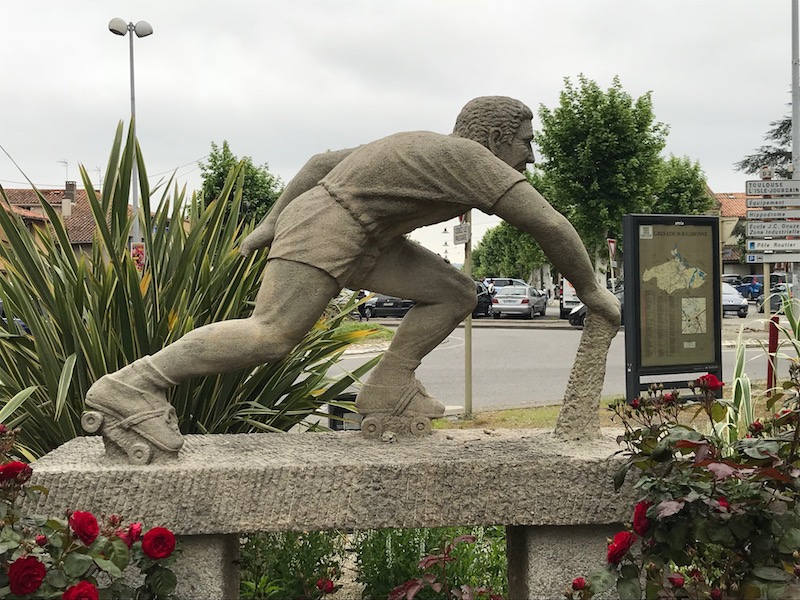
This door is the only thing remaining of a former mansion of Jean-Baptiste Lasserre, although I was unable to find any information on who Jean-Baptiste Lasserre was. The space where the house was is a nice little park.


This is the Villa Léopoldine, an 18th century Napoleonic mansion that is now a hotel. It takes its name from a member of the Perignon family who restored the mansion in 1839.
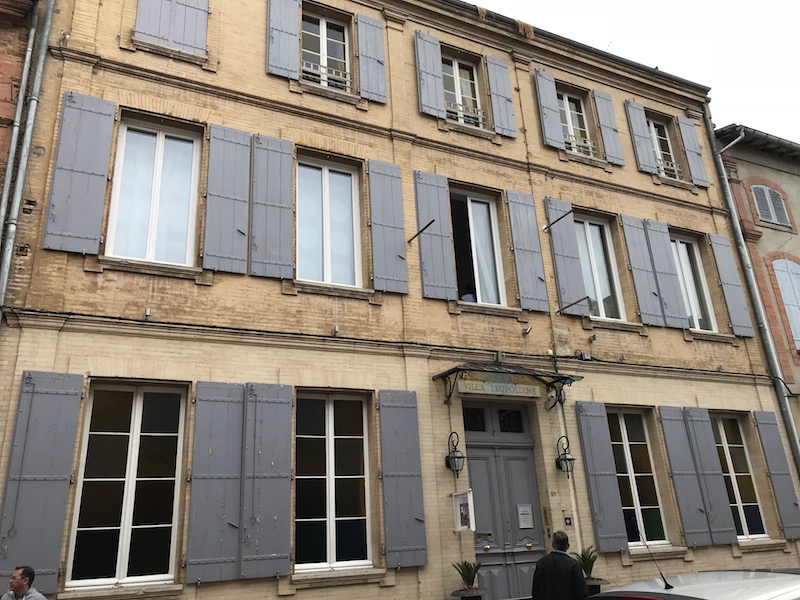

One of the main streets in town is Rue de la République, and it has a couple houses on it that are of particular interest architecturally. The first is a half-timbered house and the 2nd has very typical terra cotta decorations.


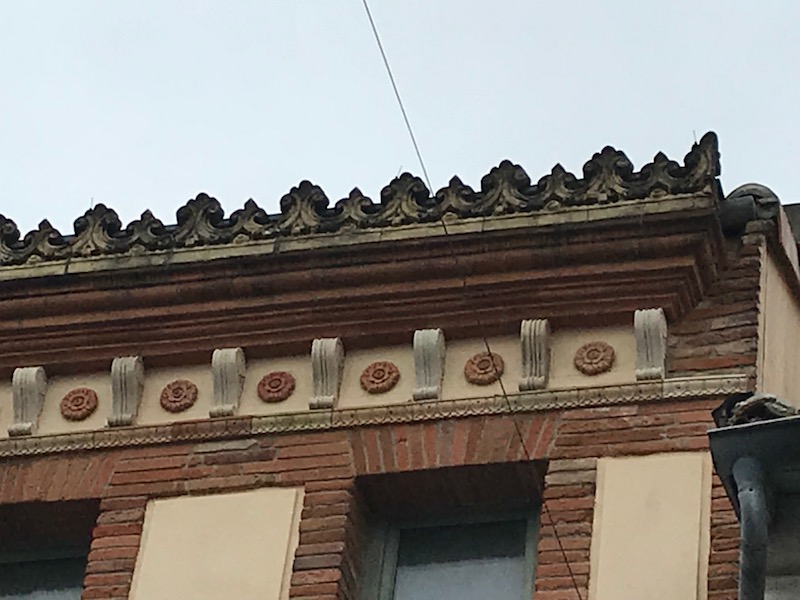
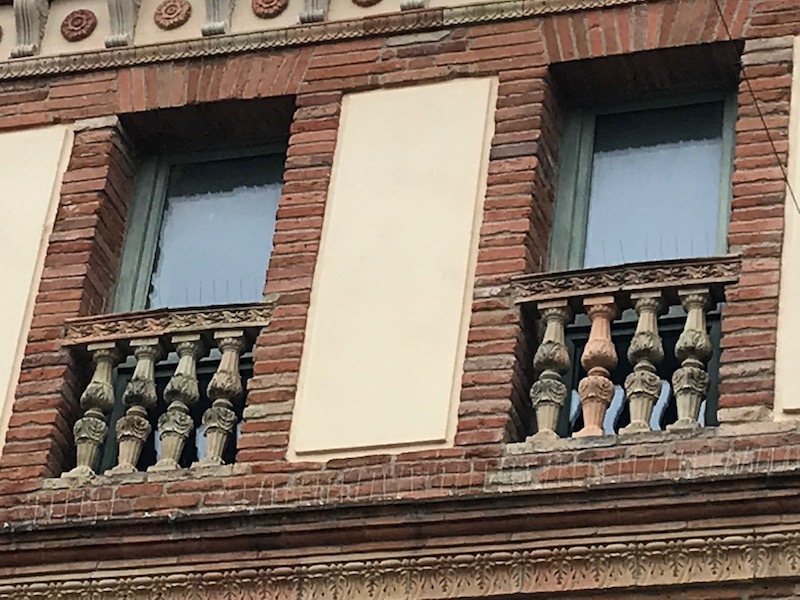
One of the other main streets is Rue Gambetta, and there are two really nice former mansions as well on this street. The first one features something called a "slit brick" decor


Up next is the former convent of the Ursuline Sisters of Toulouse. We could only see what we could from the street as it is now private property. It was founded in December 1626 as a school for young girls. More than 60 nuns, 25 boarders and many external students resided here. It occupied the entire block and included a chapel, a church, a cemetery, a dovecote and a garden. In 1794, the nuns were dismissed and the convent was nationalized and converted into a military hospital . It was then broken up, restructured and partly destroyed. Since 1965, a large part of the building has been restored, especially the roofs and facades. Although we couldn't go inside (supposedly a few things are open to the public, although probably not on Saturday), I thought the stained glass over the door was really lovely.
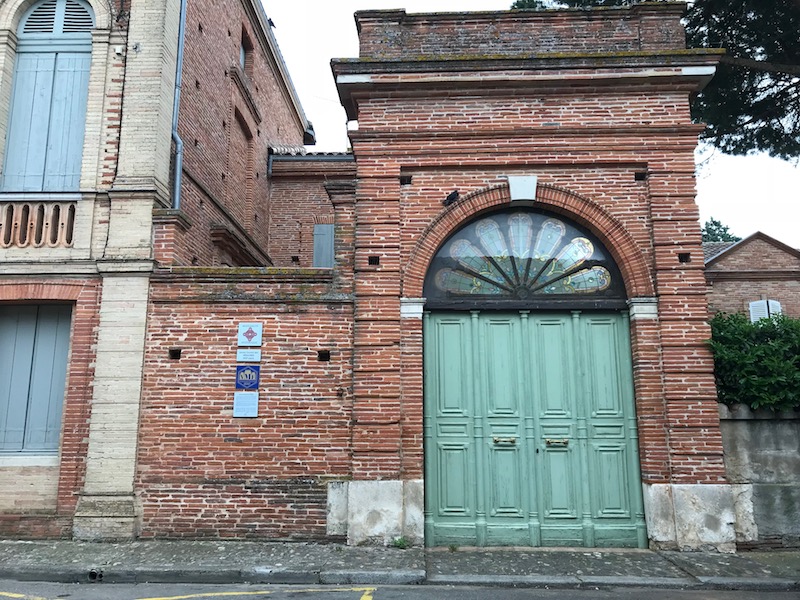
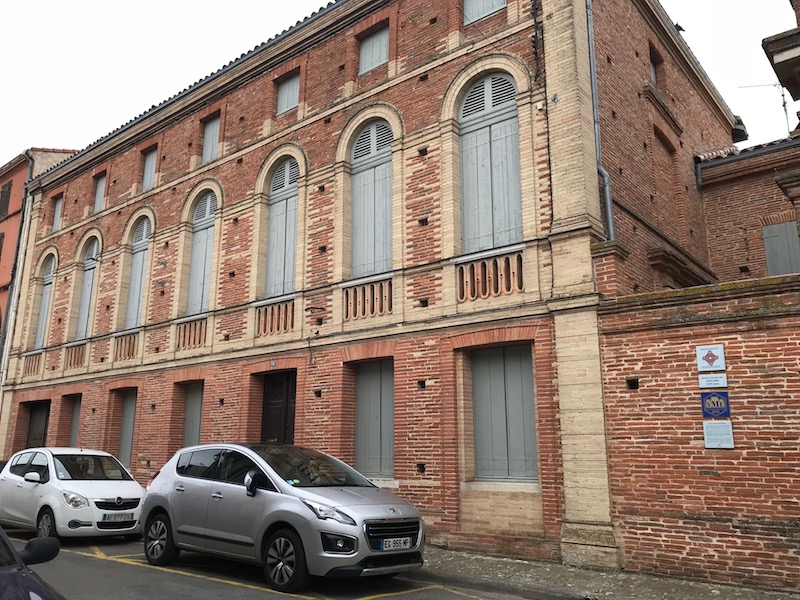
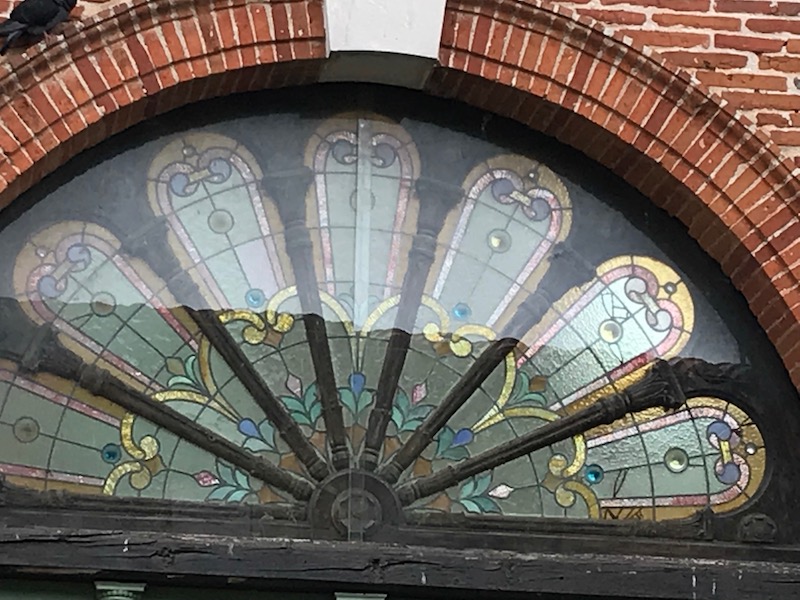
The market, which is one of the two main attractions in town (the church being the other). Grenade prides itself on having one of the oldest and largest medieval markets in France, dating back to the 13th century. The ground floor was dedicated to markets and fairs, and the market is still held underneath the thatched roof every Saturday, as well as the streets around the square. The square-shaped roof sits on 36 octagonal pillars. A belfry was added in the 17th century and was used as a watch tower. There were several boxes that were used to measure grain on display. In addition, in the middle of the rafters was the town hall. You can still see the remnants of the balcony where the stairs would have been.
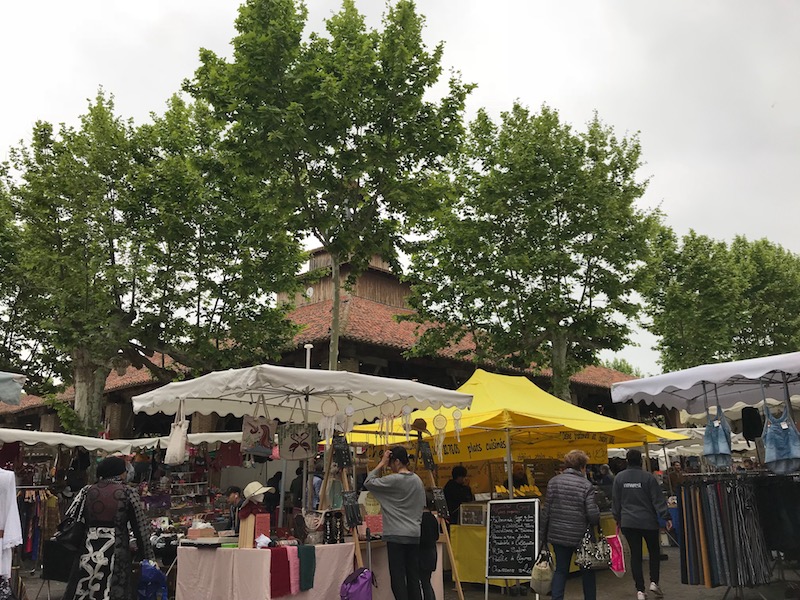
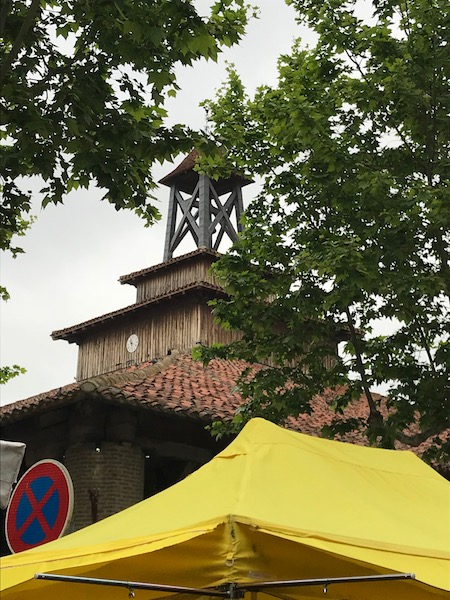

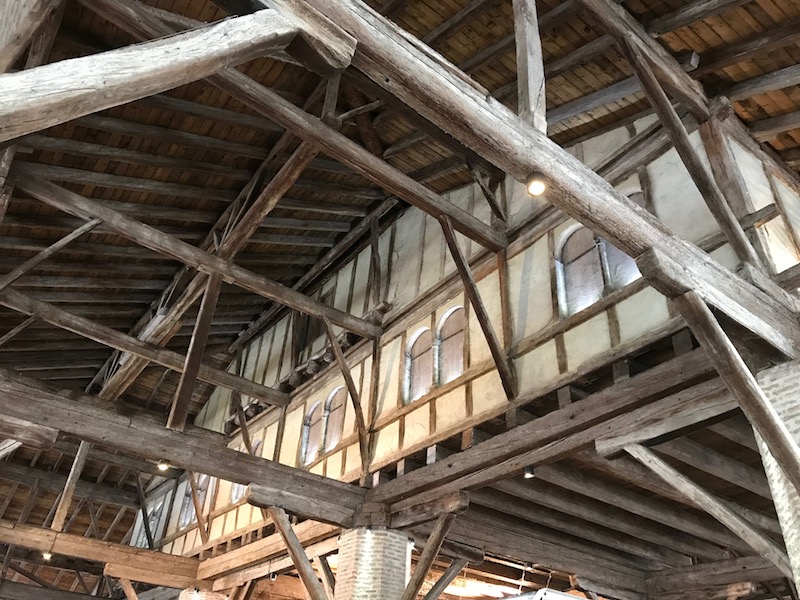


Église Notre-Dame-de-l'Assomption is the other main attraction in town. The southern Gothic style church is decorated with a Toulousain-type octagonal tower from the 15th century. The monumental portal is from the 14th century and stands out against the brick building. Most of the statues that were originally on either side were lost (probably during the Revolution).

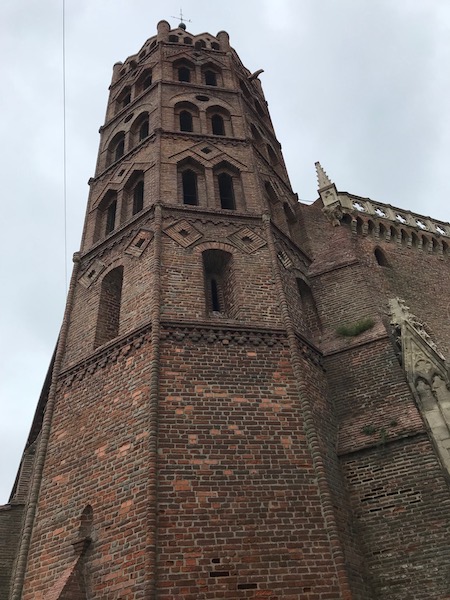
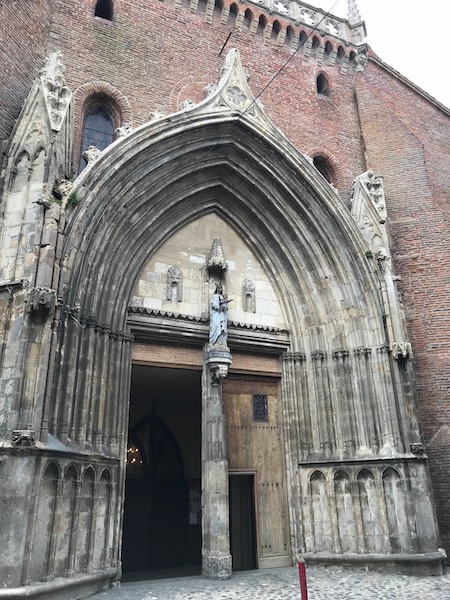
Moving inside, on either side of the main entrance are two statues representing the Virgin's parents: St Joachim and Sainte Anne.
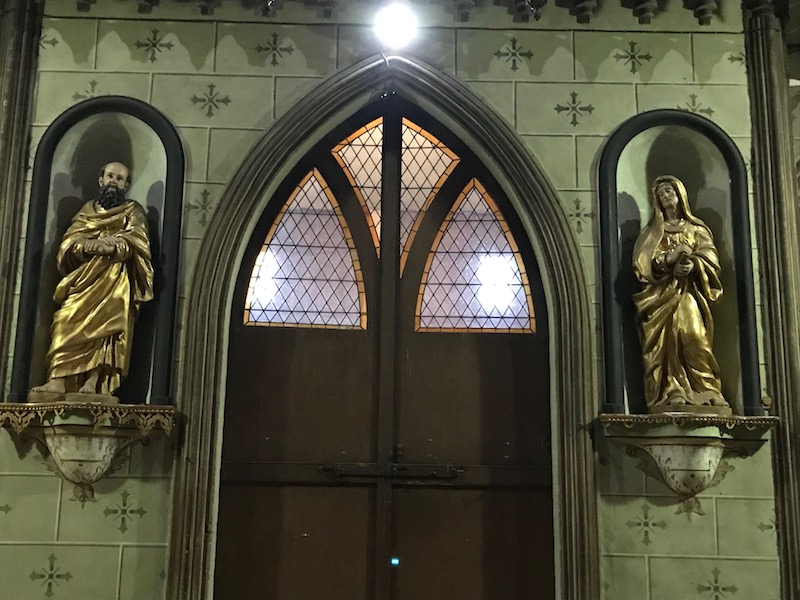
The first organ that was in the church was moved from the Abbey of Grand-Selve, but it lasted only up until 1623 when the vaults and the front wall collapsed. The current organ is a work of Aristide Cavaillé-Coll and dates back to 1857.

Here is an example of some of the stained glass windows, which were really lovely (although you could tell they had been slightly damaged throughout the years).
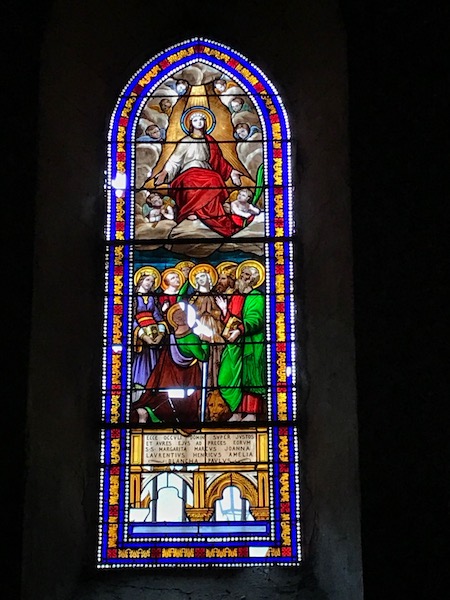
The nave is divided into three spaces by the large columns. Eleven chapels are arranged around the sides of the nave. In some of the chapels, you can see the remnants of the elaborate painted decor that used to be there. The huge baroque choir is quite remarkable, with a large altarpiece. The central statue, representing the Assumption of the Virgin, is framed on the left by a statue of St. Sebastian and on the right by a statue of St. Roch.
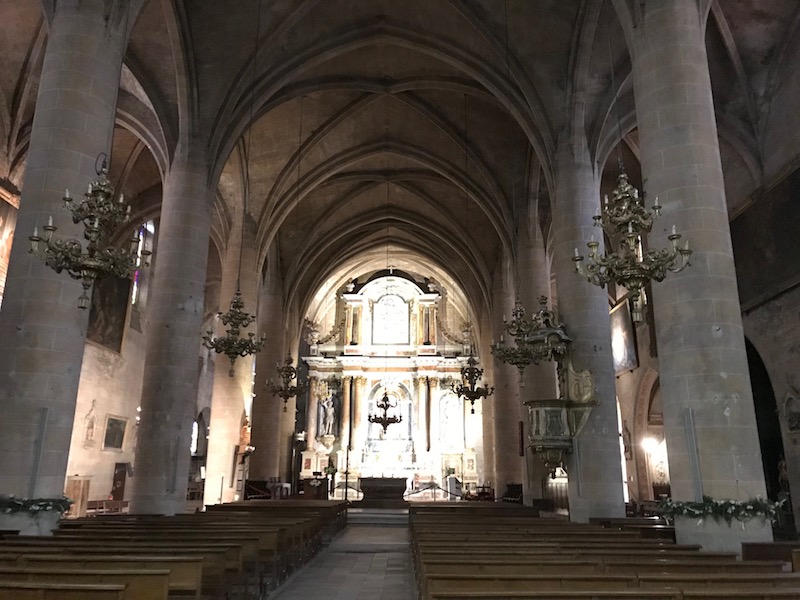

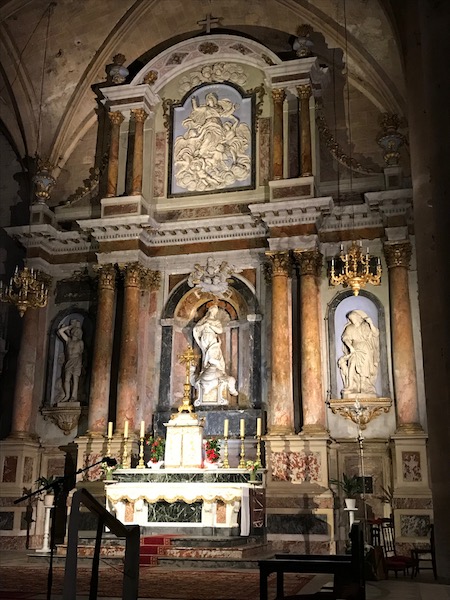
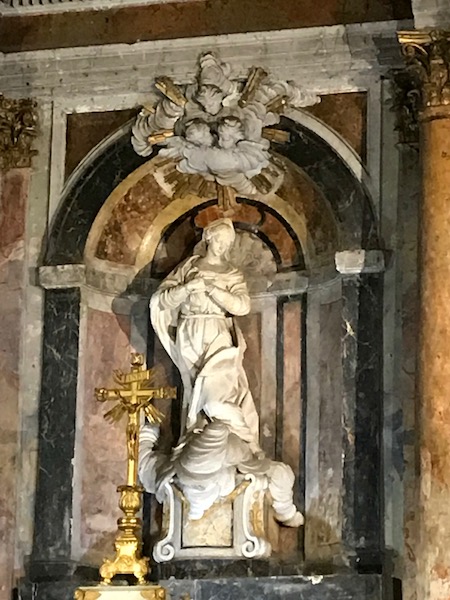
The church has a set of paintings of great masters Toulouse from the seventeenth and eighteenth centuries from the Abbey of Grand-Selve, that was closed during the French Revolution. 6 paintings: The Flight to Egypt, the Wedding in Cana, the Presentation to the Temple, the Purification, Christ and the Doctors, Pentecost. Only "The Presentation of Mary in the Temple" (shown below) has benefited from a restoration in 2010. This painting, originally attributed to Antoine Rivalz, could be the painter Antoine Sieye.
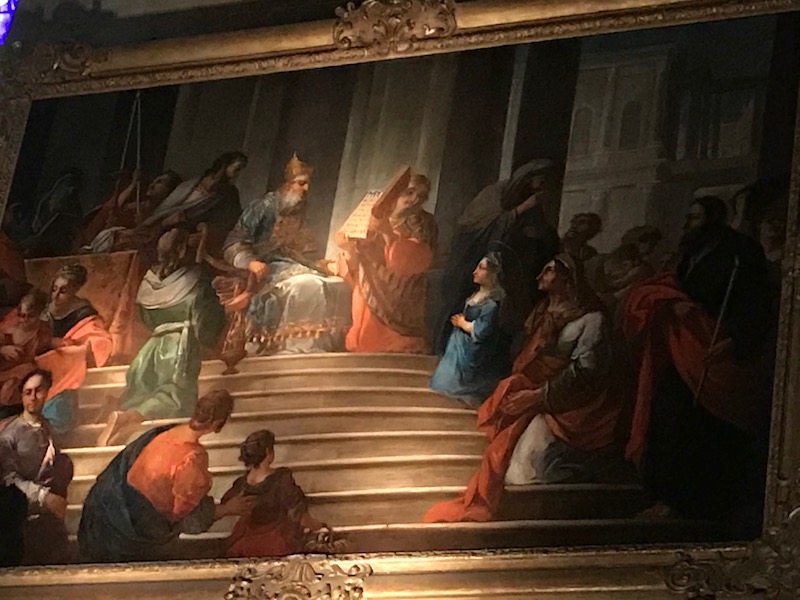
The pulpit, in gilded wood painted in faux marble, is baroque.
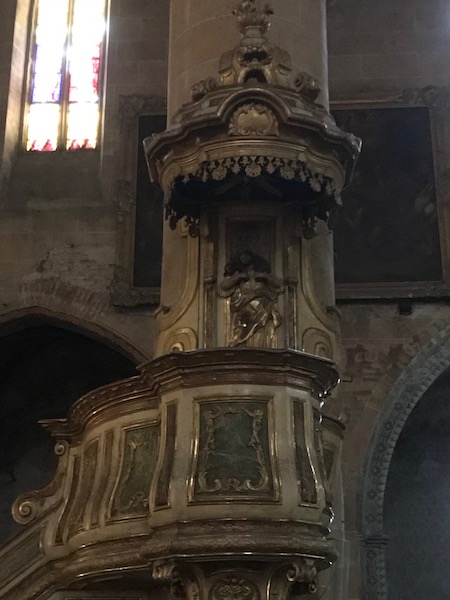
And what church would be complete without a statue of Joan of Arc!
